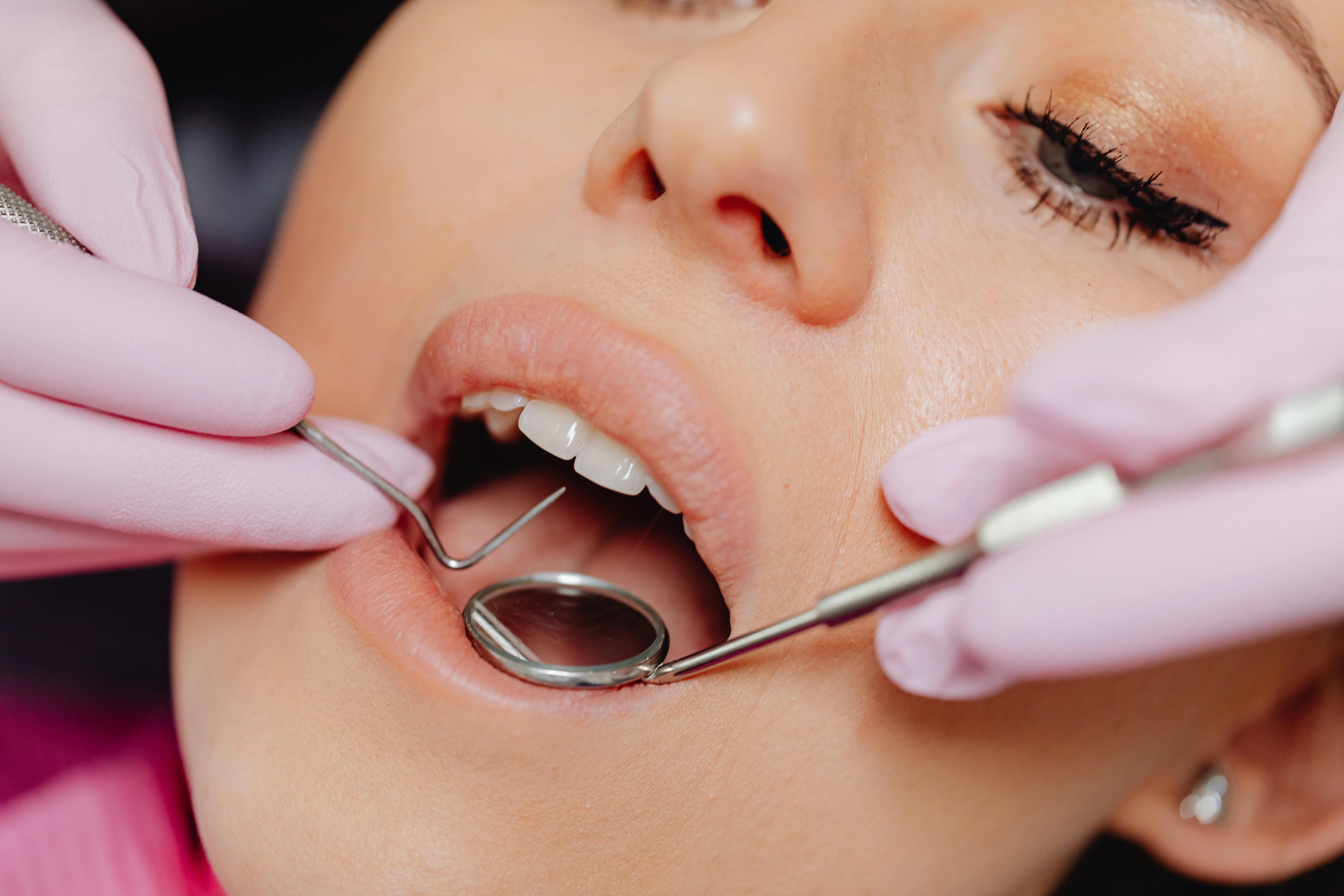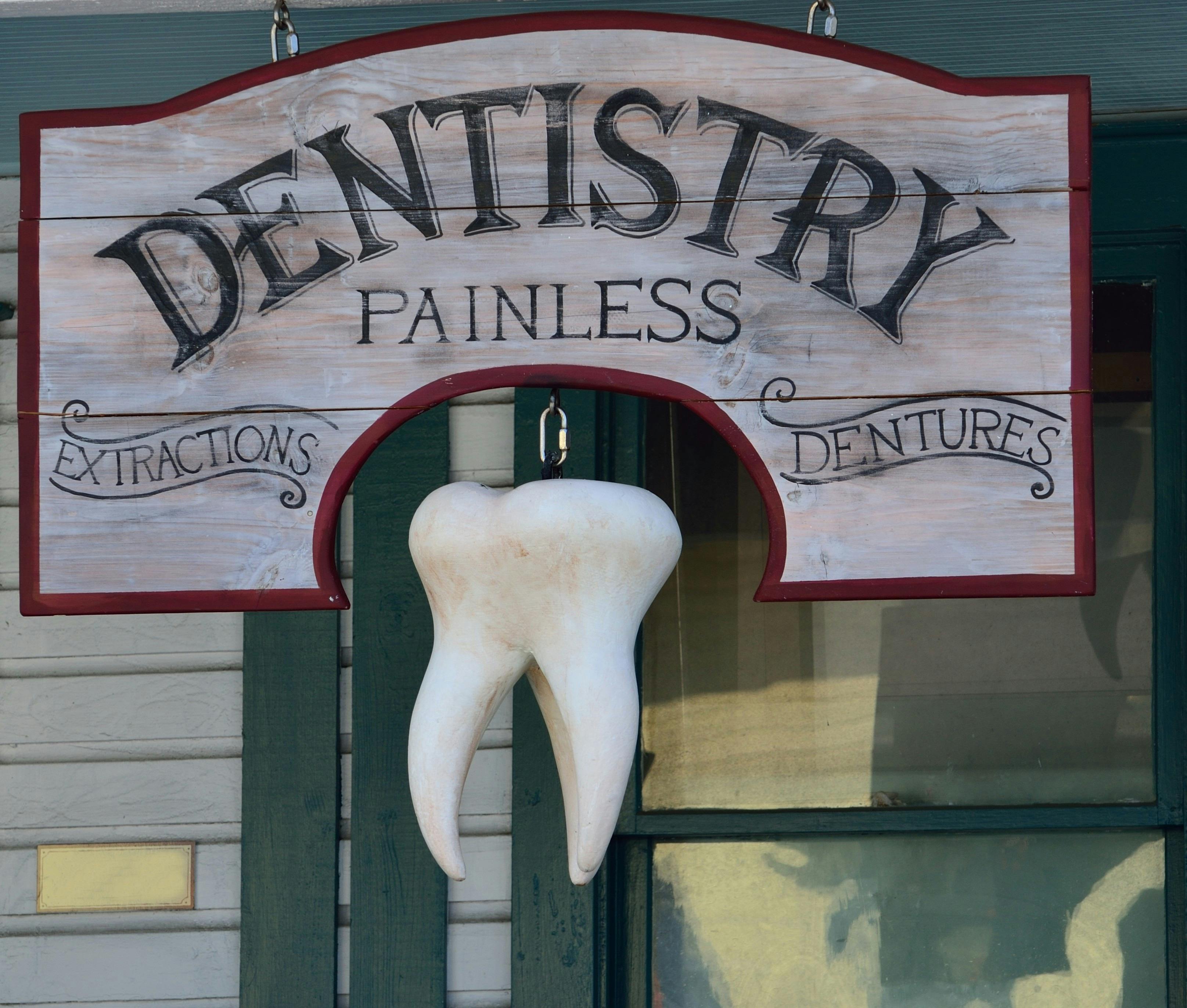Risk Factors for Tooth Pain After a Professional Cleaning
Tooth pain after a professional cleaning at the dentist is a common occurrence, and can be caused by a variety of factors. Tooth sensitivity to temperature or pressure is one of the most common causes of pain, and can be caused by an infection or irritation of the nerve in the tooth. Other risk factors for pain after a dental cleaning may include gum recession, exposed roots, cavities, and gum disease.
Tooth sensitivity is usually caused by infection or inflammation around the nerve in the tooth. This can occur if bacteria have been able to penetrate deep into the enamel of the tooth, leading to an infection which affects the nerve in the center of the tooth. This type of sensitivity often occurs after a deep cleaning procedure, such as root planing or scaling.
Gum recession can also cause pain after a professional cleaning. Gum recession occurs when gums shrink away from teeth, exposing sensitive areas such as roots which may not have had access to fluoride from toothpaste and mouthwash. Exposed roots are more prone to decay and are also more sensitive to hot and cold temperatures than healthy enamel covered teeth.
Cavities are another potential cause of pain after a professional cleaning. Cavities occur when bacteria has been allowed to remain on teeth long enough for it to erode away at healthy enamel tooth structure. This leads to holes in teeth which can be very painful if they become filled with food particles or debris during brushing or flossing.
Finally, gum disease can also lead to pain after dental cleanings. Gum disease is an inflammation of gums caused by an accumulation of bacteria along the gum line due to inadequate brushing and flossing habits over time. If left untreated, gum disease can lead to receding gums which exposes sensitive areas underneath them that may become painful during brushing or flossing activities.
Therefore, it is important for individuals who experience pain after their dental cleanings to speak with their dentist about possible causes such as those listed above so that they can receive proper treatment if necessary.
Diagnosing the Source of Post-Cleaning Tooth Pain
It is not uncommon for people to experience some degree of discomfort after a professional dental cleaning. While this may be disconcerting, it is often only temporary and can usually be alleviated with over-the-counter pain relievers. However, if the discomfort persists or worsens, it may be a sign of something more serious. Therefore, it is important to understand the possible causes of post-cleaning tooth pain in order to diagnose and treat the underlying condition.
One common cause of post-cleaning tooth pain is an infection in the gums or teeth. This type of infection can be caused by bacteria that are present in plaque and tartar buildup on the teeth, which can become trapped under the gums during a dental cleaning. If left untreated, this type of infection can lead to gum disease or even tooth loss. To prevent this from happening, it is important to seek immediate treatment from your dentist if you experience any signs of an infection after a dental cleaning.
Another possible cause of post-cleaning tooth pain is an irritation caused by abrasive materials used during the cleaning process. This could include the use of rough polishing tools or ultrasonic scaling devices that are used to remove plaque and tartar buildup from the teeth. If you experience any sensitivity or discomfort after your dental cleaning, it may be due to these abrasive materials irritating your teeth and gums. Your dentist can suggest ways to reduce sensitivity and minimize discomfort in these cases.
Finally, some people may experience post-cleaning tooth pain due to underlying health conditions such as diabetes or autoimmune diseases that affect the health of their mouth and gums. In these cases, it is important to have regular checkups with your dentist so that any issues can be identified early on and treated promptly before they worsen.
In summary, post-cleaning tooth pain can have various causes ranging from infections in the gums or teeth to irritation caused by abrasive materials used during a dental cleaning. It is important for individuals who experience this type of discomfort after a professional dental cleaning to seek treatment from their dentist in order to diagnose and address the underlying cause as soon as possible.
Treatments for Post-Cleaning Tooth Pain
If you experience tooth pain after a professional dental cleaning, there are a few treatments that can help. The first and most important step is to contact your dentist. They can advise you on the best course of action, depending on the cause of your tooth pain. In some cases, they may be able to provide relief with an over-the-counter pain reliever or prescription-strength medication.
It’s also important to practice good oral hygiene at home and avoid any activities that could lead to further irritation. This includes avoiding hot and cold foods or beverages, as well as avoiding hard or crunchy foods like popcorn and chips. If your tooth is sensitive to heat or cold, you should also avoid brushing or flossing too vigorously in the area.
In some cases, your dentist may recommend a special mouthwash designed specifically for sensitive teeth. This type of mouthwash helps reduce inflammation and can help alleviate the discomfort caused by post-cleaning tooth pain. Your dentist may also suggest an application of fluoride varnish or sealants to protect your teeth from decay and reduce sensitivity in the area.
If post-cleaning tooth pain is frequent or persistent, it’s important to speak with your dentist as soon as possible in order to identify the underlying cause and determine the best course of treatment. In some cases, additional treatments such as root canal therapy or crowns may be necessary in order to provide long-term relief from post-cleaning tooth pain.

Over-the-Counter Medication for Post-Cleaning Tooth Pain
If you experience tooth pain after a dental cleaning, it is important to take steps to alleviate the discomfort. Fortunately, there are several over-the-counter medications available that can help reduce the pain and inflammation associated with post-cleaning tooth pain. Here are some of the most commonly used medications for treating post-cleaning tooth pain:
Acetaminophen: Acetaminophen is a pain reliever and fever reducer. It is available in generic form as well as under the name Tylenol. When taken as directed, it can help to relieve the discomfort associated with post-cleaning tooth pain.
Ibuprofen: Ibuprofen is a nonsteroidal anti-inflammatory drug (NSAID) that can reduce both swelling and pain. It is available over the counter in generic form as well as under brand names such as Advil and Motrin.
Aspirin: Aspirin is also an NSAID that can reduce both swelling and pain associated with post-cleaning tooth pain. It is available in generic form as well as under brand names such as Bayer and Bufferin. However, it should not be used by children or teens who have or are at risk of developing chickenpox or flu symptoms due to its association with Reye’s syndrome.
Numbing Gels: Numbing gels containing ingredients such as benzocaine can provide temporary relief from post-cleaning tooth pain by numbing the affected area. These gels are available in both prescription strength and over-the counter forms and should be applied directly to the affected area for best results.
It is important to speak to your dentist or doctor before taking any medication for post-cleaning tooth pain, especially if you have a medical condition or are pregnant or breastfeeding. Your doctor may recommend other treatments such as warm saltwater rinses or icing the affected area in addition to over-the counter medications for best results.
Home Remedies for Post-Cleaning Tooth Pain
Tooth pain after a dental cleaning can be quite uncomfortable and even painful. Luckily, there are home remedies that you can use to help alleviate your discomfort. One of the most effective methods is to use a cold compress or ice pack on the affected area. This helps to reduce swelling and inflammation, which in turn helps to reduce the pain. Additionally, it is important to maintain good oral hygiene habits in order to prevent future pain. This includes brushing your teeth twice daily and flossing at least once a day. You should also make sure that you are drinking plenty of water throughout the day, as this helps to keep your mouth hydrated and free from bacteria and plaque buildup.
Another home remedy for post-cleaning tooth pain is to rinse with warm salt water. This helps to reduce inflammation and can also help with any infection that may have developed as a result of the procedure. To make this solution, mix one teaspoon of salt into a cup of warm water and swish it around in your mouth for about 30 seconds before spitting it out. Do this twice daily until the pain subsides.
Finally, if you’re experiencing severe pain after having your teeth cleaned, you may want to consider taking an over-the-counter medication such as ibuprofen or acetaminophen. These medications can help reduce inflammation and provide temporary relief from discomfort associated with post-cleaning tooth pain. However, it is important to speak with your dentist before taking any medication so they can advise you on the best course of action for your particular situation.
When to Visit the Dentist Again After a Professional Cleaning
Visiting the dentist for a professional cleaning is an important part of maintaining good oral health. After a professional cleaning, it’s important to know when to visit your dentist again for another cleaning. Generally, most people should visit the dentist every six months or twice yearly for a professional cleaning. However, there may be some cases in which you need to visit more frequently, such as if you have gum disease or other oral health problems that need to be monitored more closely.
Your dentist can assess your individual risk factors and needs and then provide you with specific instructions as to when you should schedule your next appointment. For example, if you are at risk of developing cavities or periodontal disease, your dentist may recommend coming in for cleanings more often than every six months.
If you practice good oral hygiene at home and visit the dentist regularly, your next visit may be scheduled for six months after your first professional cleaning. During this time, it’s important that you brush twice daily and floss daily to keep plaque from building up between cleanings. If plaque accumulates on the teeth for too long it can harden into tartar which cannot be removed with brushing alone and requires professional intervention from the dentist.
It’s also important to note that visiting the dentist more often than twice a year may not necessarily make much of a difference in terms of overall oral health since many dental issues are lifestyle related and not necessarily due to inadequate care at home or lack of professional cleanings. Therefore, it’s best to consult with your dentist about how often they recommend coming in for check-ups and cleanings based on your individual needs.

